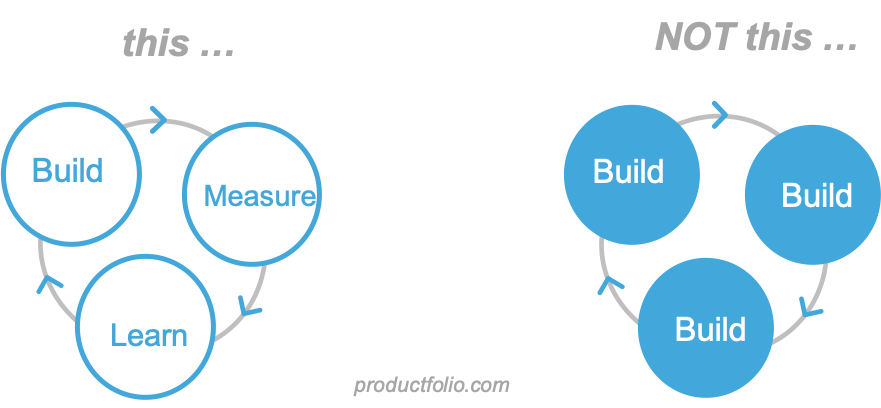What is Continuous Discovery?
The traditional approach to product discovery involves devoting time to discovery before beginning development. A period, which may be several weeks or even months, is set aside to determine the needs of users and decide what best solutions to build and ship. A single discovery period can take so much time and still not deliver the best results. Moreover, the market continually evolves and you continue to learn more about your customers every day, so why limit your learning to a predefined set of tasks at the beginning of a project?

What is Continuous Discovery About?
Continuous discovery on the other hand, starts with the idea that it is an ongoing process, and that you do not need all the ansers up-front, before you begin Rather, you might do a ‘big bang’ of discovery work to begin a prototype, but then you could move into an iterative footing, in which you continue to refine your understanding, while concurrently beginning to build (or prototype) your product.
Why You Should Encourage Continuous Discovery
It is a well-known fact that the huge majority of new product or feature launches end up failing commercially. Many companies often found out way too late that what they’re offering isn’t really what users need. This, to an extent, is due to the seeming belief by some product teams that discovery is a one-off thing.
It is certainly not an exaggeration stating that your success is a factor of how delighted your customers are. And what better way to achieve that than by engaging them on a continuous basis to inform your decisions?
Continuous discovery is a helpful tool that can enable you to deliver true value repeatedly. It is especially valuable if your company is one of those focusing on product-led growth. You improve your chances of creating better products and achieving superior results with your roadmap through this practice.
Continuous discovery can help ensure that you are indeed using your development process to create something valuable. It can save you the time that would otherwise be spent on addressing different issues later on.
Companies that don’t do sustained discovery and instead focus more on product delivery tend to spend more time on issue tracking and resolution.
Creating Value
The work of product teams is mainly that of creating value all-round. With every potential solution, the goal is, or should be, to meet the needs of both the business and the customer.
Providing value for users is even more important. The success of your organization or the value it gets hinges heavily on satisfying the needs of your users. This underlines the importance of staying in tune with your target market’s needs and delivering as you go.
With continuous discovery, it becomes easier to deliver more, true value that can help you achieve your goals. This practice enables you to identify, describe, and validate new items to add to the product backlog continually. It affords some flexibility for acting on new information or changing requirements.
When looking to create solutions that deliver value to both the customer and the company, all employees must be familiar with an organization’s mission and vision. This will inform their decision on what solutions work for both users and the company.
How to Promote Continuous Discovery
It is vital to have the right company culture for continuous discovery to work and deliver the best results. What’s the ideal culture? It is that placing more emphasis on outcomes than on output.
With a greater focus on outcomes, product teams would feel less compelled to make features available. They will instead pay more attention to delivering improved performance and creating true value. Emphasis on outcomes enables better iteration and superior learning.
Perhaps, the best way of promoting continuous discovery is by integrating it with product delivery. This leverages your expectedly proven delivery processes. An example of this would be asking real users to test live features, interviewing them, and then using feedback gathered to decide what to add to the backlog.
It will also help to design your roadmap in a manner that encourages continuous discovery. Ensure that items on it have apparent discovery activities to back them. Products or features should be linked to quantitative or qualitative data.
Mindsets That Support Great Outcomes
In a talk given at the Industry Product Conference, Teresa Torres identified three mindsets that promote success with continuous discovery. These are:
Collaborative mindset – It is critical to work mutually and with sincerity. This might seem difficult on a cross-functional team featuring people with different expertise. In spite of the difference, however, everyone must work together in deciding how best to achieve the outcome(s) in focus. Customers’ needs, business goals, and technical capacity should inform what gets done rather than attempting to display superior knowledge.
Continuous mindset – What this means is that teams should see their tasks as ongoing. They should see both product discovery and product delivery as continuous – they are never done. This mindset creates room for learning and iteration. It stresses the need for frequent meetings with customers and using their inputs for decision-making.
Experimental mindset – Teams should be ready to use a variety of testing tools. You should not merely base your assumptions on A/B testing, which is not only costly but also hardly the best for discovery. Include other methods, such as smokescreen tests and prototyping, among others, in deciding what path to follow.


